Overview
The goal of the power distribution system of AuBi is to provide power to all the components of the robot safely and efficiently. As described in the specification of AuBi, the fully charged robot needs to be able to operate for at least three hours before needing to return to its charging station. Such requirements then inspired a rigorous process of part selection and development of the battery management system.
Current Research
The first part of the power system design starts with calculations. After most of the electrical parts on AuBi were decided, a spreadsheet was created to document the voltage levels and power ratings of all the components.
Based on data below, further calculation was done and we had chosen the 30Ah lithium battery to meet the specification of three hour continuous operation upon one full charge. First diagram for the power system was also created for preliminary configuration of the power system wirings.
Based on the diagram below, a complete wiring schematic was then designed to fully power all the components of the robot.
Power Calculations and Wiring Diagrams
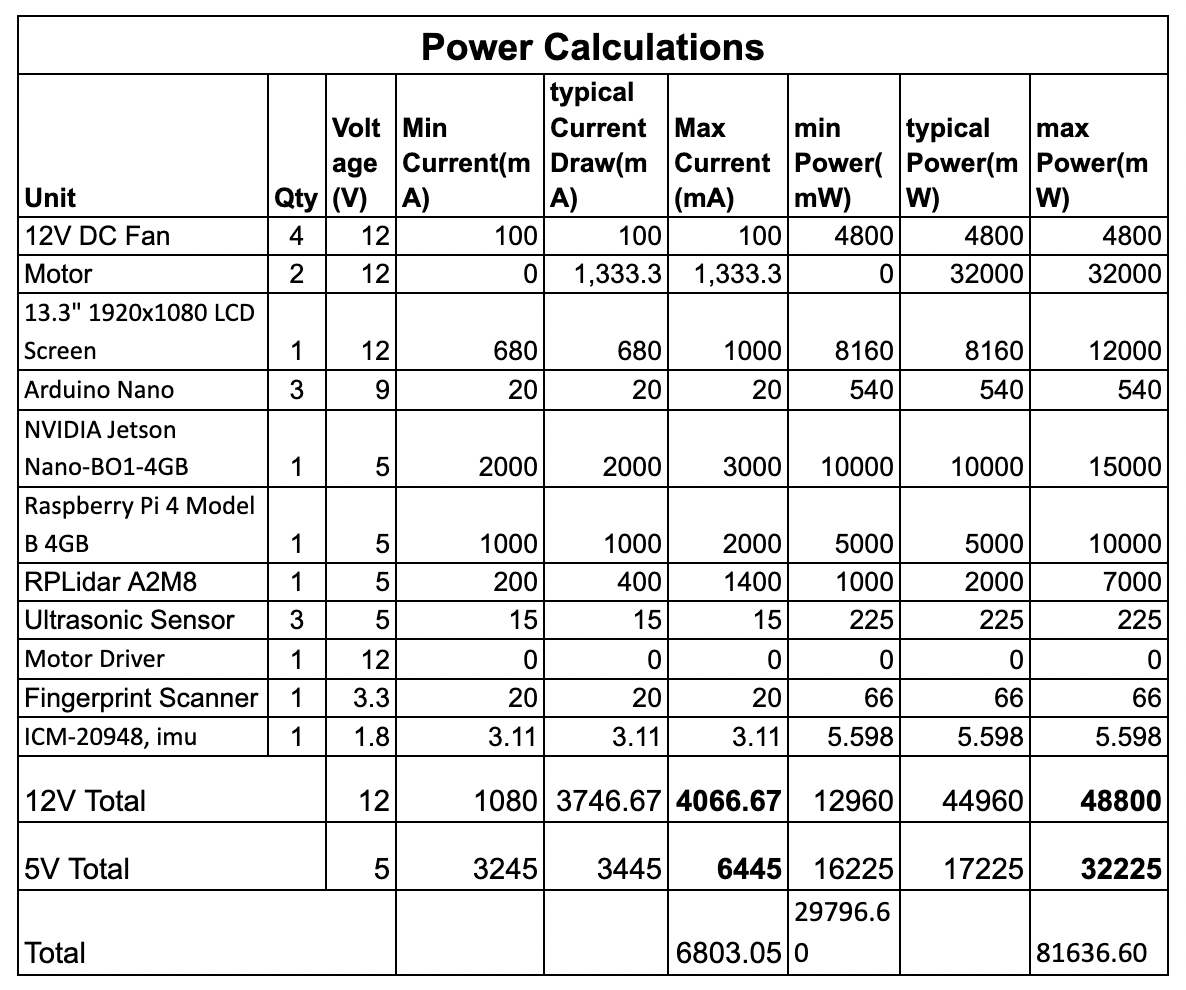
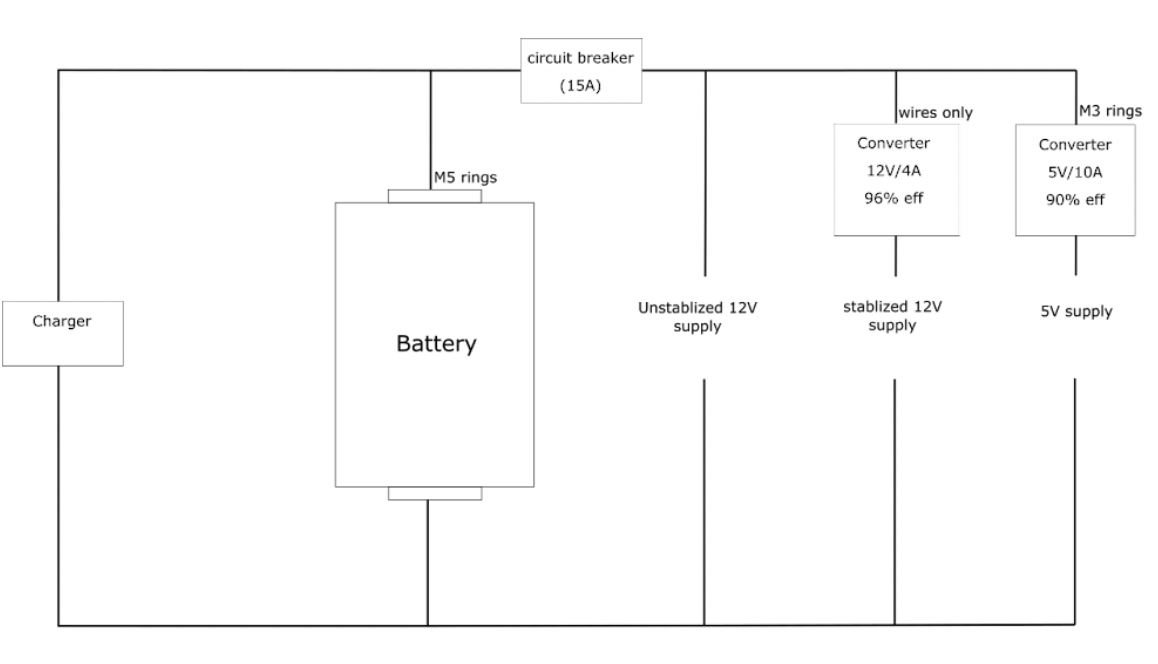
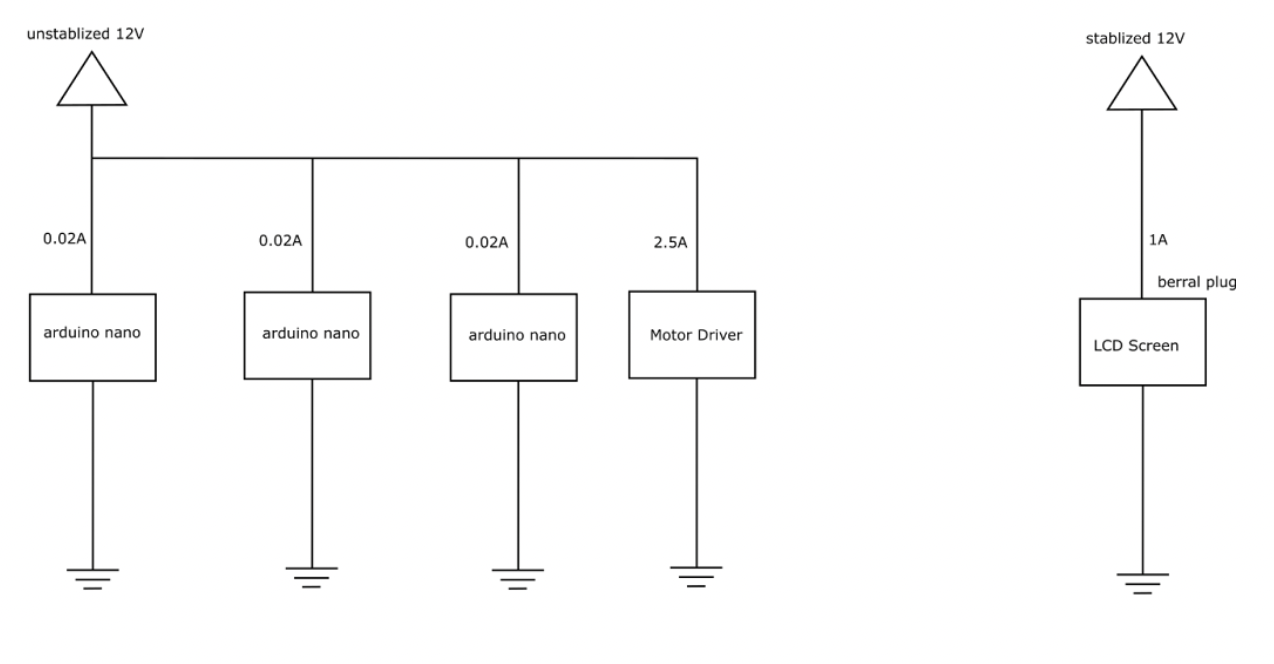
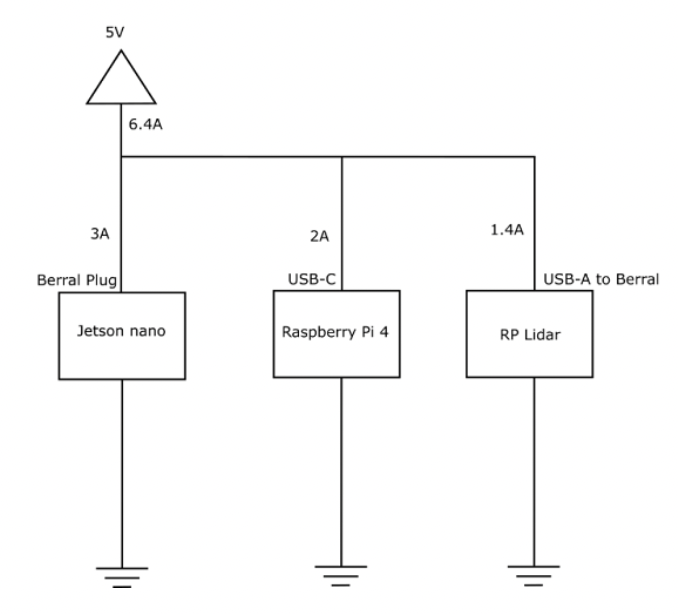
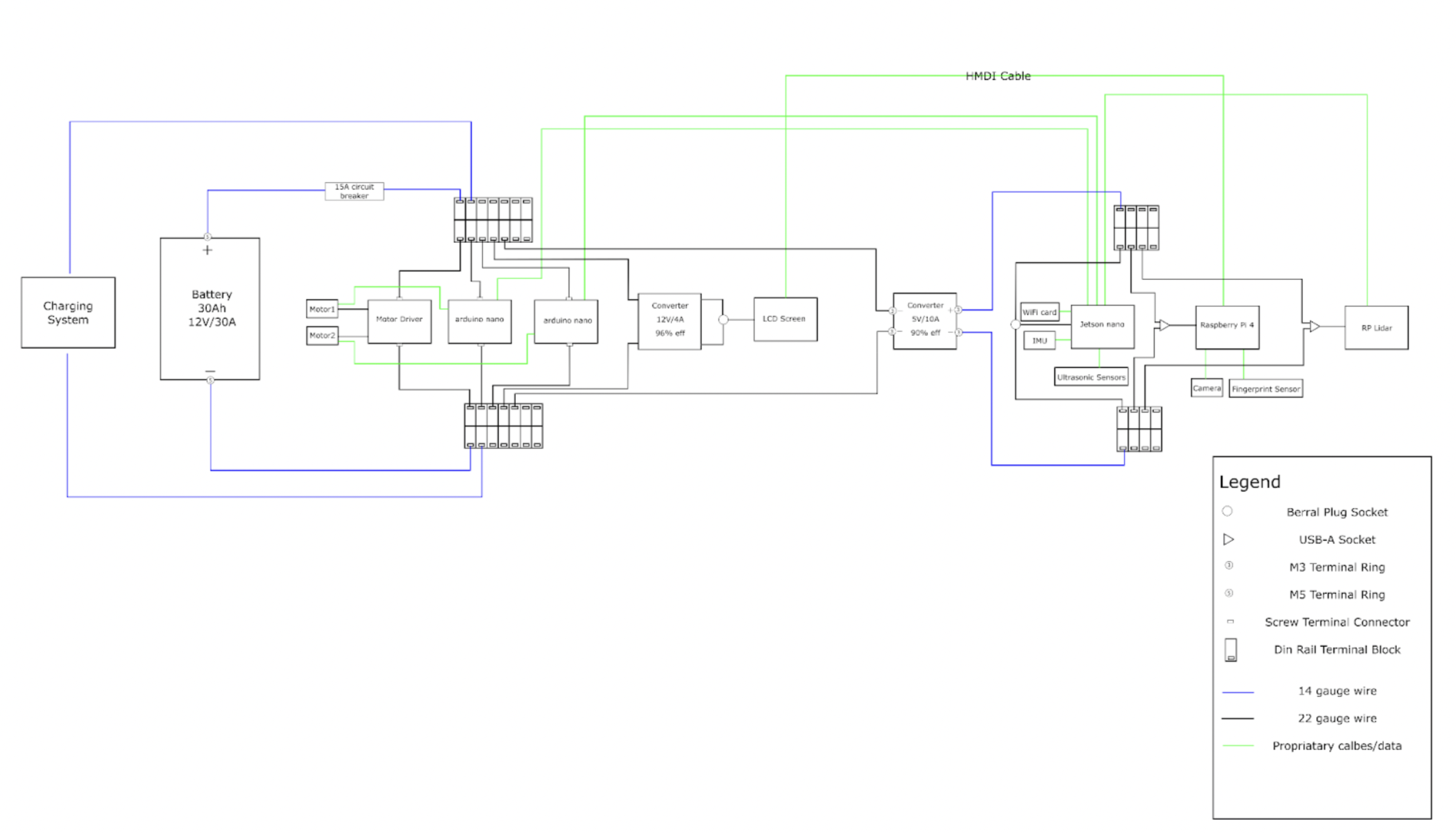
Future Research
The next step of the power system development for AuBi is to implement the battery management system into the existing power system. It is important for AuBi that users as well as the operating system can monitor the battery level during operation. A hall effect sensor has already been chosen for minimally invasive monitoring of the battery performance.
Literature Review
Battery Management Systems for Lithium-ion Batteries
https://www.sciencedirect.com/science/article/pii/B9780444595133000157
This article describes various aspects of battery management systems for lithium-ion batteries. The lithium-ion batteries can be used only in specified conditions, and therefore battery management system (BMS) is necessary in order to monitor battery state and ensure safety of operation. The different BMS structures have been compared and their advantages have been shown depending on battery system size. Moreover, typical functions of BMS have been described with special attention to state of charge (SoC) estimation. Advantages and drawbacks of various estimation methods have been introduced that help a BMS user with understanding when a SoC indication might be misleading.
Integrated Circuit Design
https://www.ti.com/solution/battery-management-system-bms
This page shows Texas instruments’ integrated circuits and reference designs which can help create battery management system (BMS) designs that enable highly accurate monitoring of and control over the high-voltage battery stack.
The articles talks about how BMS designs often require:
- Resolution of voltage and temperature measurement on cell level.
- Accurate current sense on pack level.
- Following state-of-the-art architecture regarding system redundancy in order to allow implementation of the system on the highest safety level.
Battery Management System Monitoring
https://ieeexplore.ieee.org/document/8997319
This article talks about the design of a battery management system that can monitor the voltage, current, temperature, energy storage and location information of the battery pack in real time, and transmit information to the cloud management platform in real time. The system has been used in the leasing battery products of a battery leasing enterprise.
Two-Stage Control Structure
https://ieeexplore.ieee.org/document/8243323
This paper proposes the two-stage control structure which is composed of battery management unit and central management unit in order to improve the monitoring and management technology of integrated power supply in power system. The paper presents a battery management system (BMS) design scheme that can conduct real-time monitoring of the battery state accurately, such as the battery charge and discharge current, voltage, temperature and the state of charge. It can also timely alarm and carry out protection action in the abnormal state of the battery group. This study ensures battery safety and extends the lifespan of the battery group.